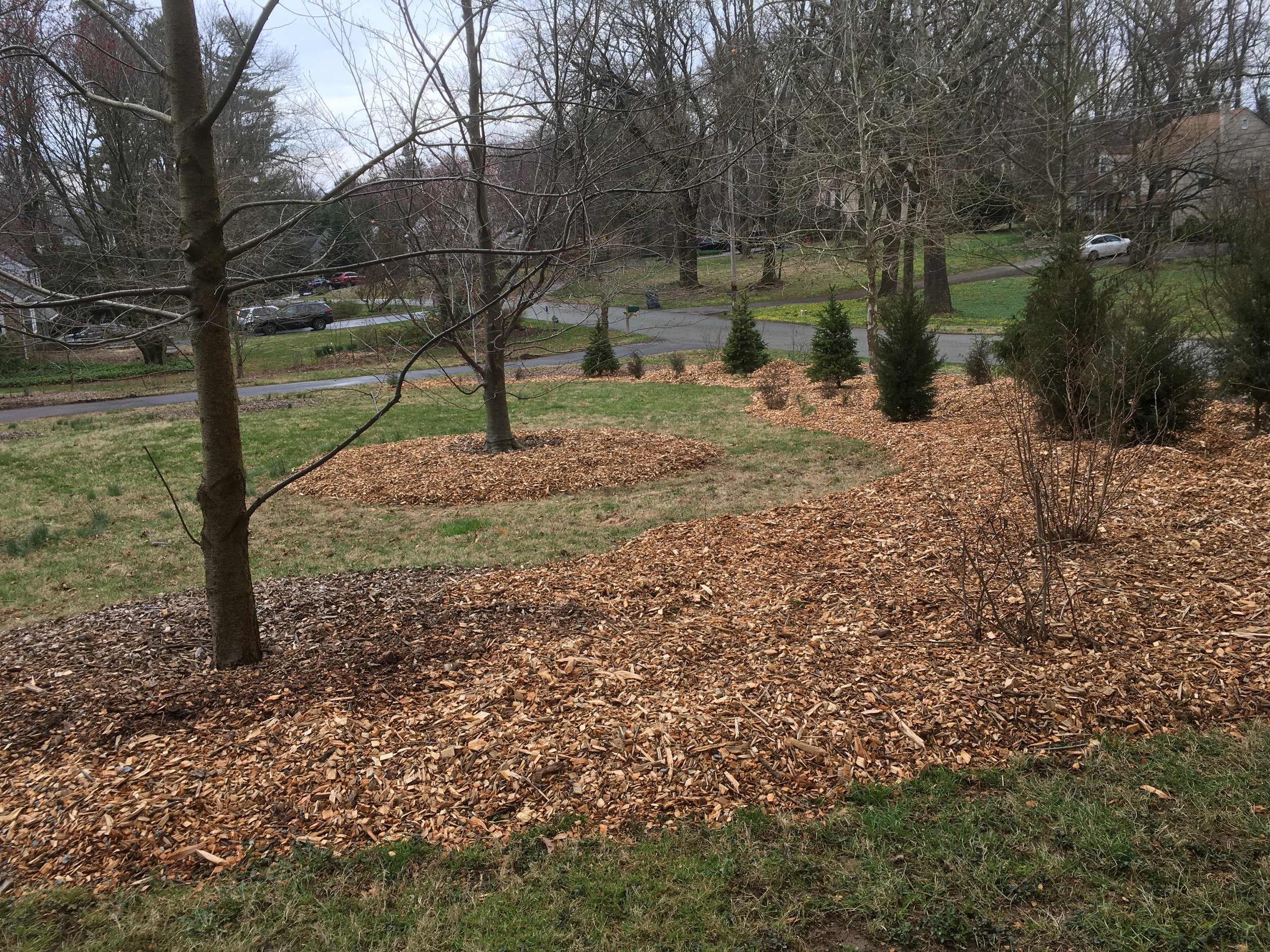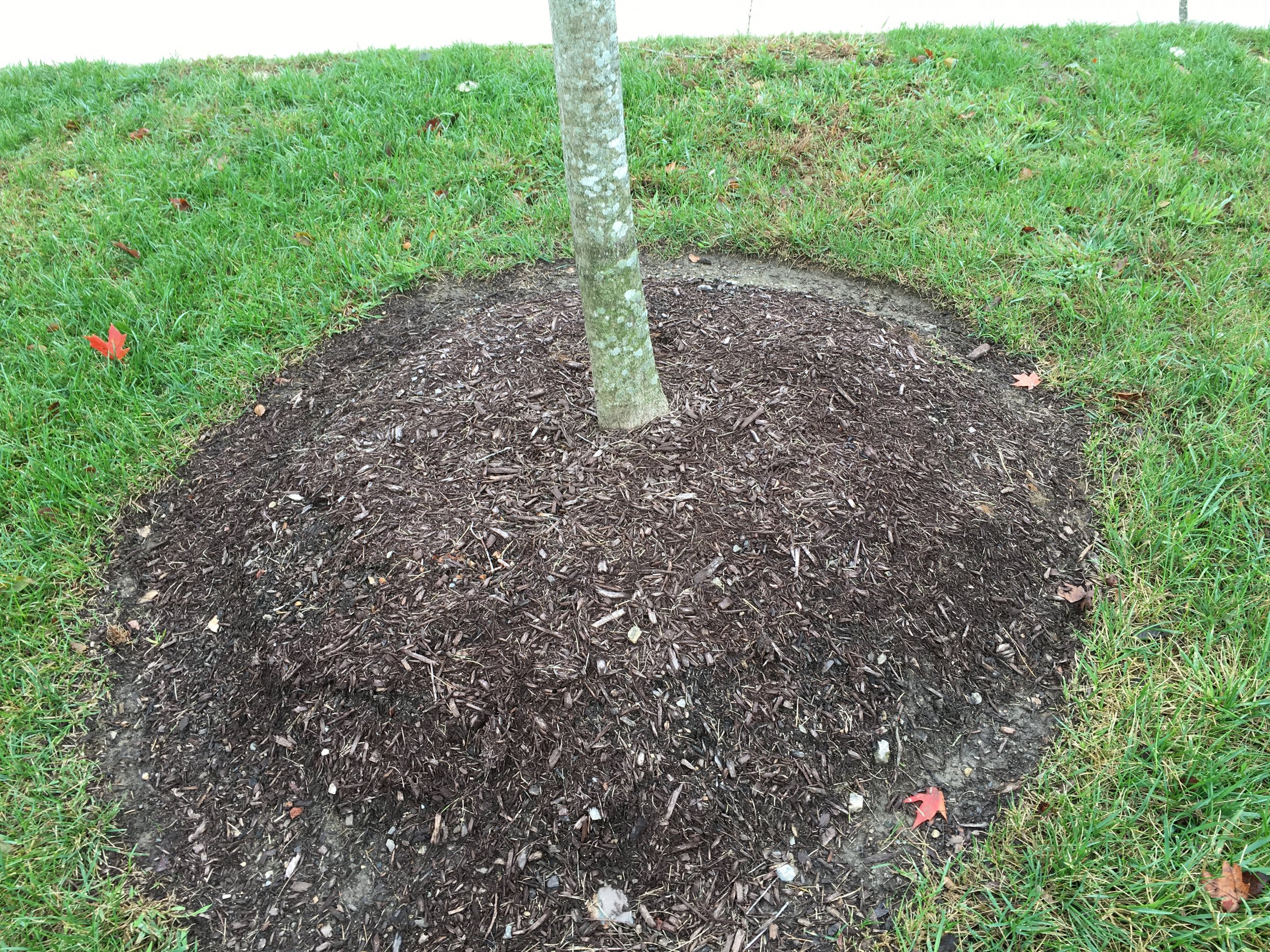Much about Mulch
Thoughts and professional garden tips from an ISA Certified Arborist, Registered Landscape Architect, and stone mason with thirty years of design-build experience.
Before you mulch, have you considered whether the garden layout make sense, or whether adding groundcovers could reduce your dependence on repetitive services? I studied one commercial site, and found an entire acre of sprawling mulch beds which served no function. At $35 - $50.00 per cubic yard + delivery + labor, annual mulching adds up! Proper selection & spacing of plants will put the focus on the aesthetics of those plantings and not on the type, color and texture of the mulch.
Dense plantings put the focus on flowers & foliage rather than the type of mulch.
Timing: Mulch can be applied anytime of the year there’s no snow on the ground. Sometimes it’s better to wait until foliage on low plantings has emerged to that these plants don’t get trampled or covered up. Once disfigured, things like hosta leaves won’t recover until the next season.
Weed fabric: This is an absolute NO. Many weed seeds germinate on the surface, so the material will not stop that germination. The fabric interferes with water movement into the soil, becomes entangled in plant roots, makes future plantings a nightmare, and may contribute to microplastic contamination of soil & air.
Weed fabric entangled in shrub roots.
Preemergent herbicides: I won’t go into detail here, as I don’t use them. If you do use them, follow directions precisely; often I see these materials over applied. If you use a vendor, they should be a certified pesticide applicator.
Edging: While many people prefer and precisely cut bed edge, I recommend against edging. Edging near trees damages tree roots, and edging on down slope can lead to erosion of that bed edge.
Material: My hands down favorite mulch is fresh wood chips right out of the tree truck. This material is inexpensive, and sometimes free. Surface applied mulch (even fresh, green material) does NOT rob the soil of nitrogen. Wood chips are far and away the most sustainable choice, as trucking and additional processing (grinding, sorting, adding dye) is not necessary. Keep in mind that many mulch vendors are not horticulturists, arborists or soils experts, and marketing phrases such as ‘our most popular product’ doesn’t necessarily mean it’s the best product for your garden.
Wood chip mulch: while not everyone likes the coarse appearance, it is my favorite for plant growth and reasons of sustainability & low cost.
Free wood chips are generally available from your local tree company, but keep several things in mind: they’ll want to dump on a paved surface free from overhead wires & tree branches; they’ll want to dump the full load, not try to meter out a few cubic yards; you should expect some brush & chunks of wood mixed in the load, as well as the occasional coffee cup or similar; timing is limited to when they’re working locally (unless you’re willing to pay for time & fuel); size & color of wood chips can be variable.
Size: I prefer coarse material. Finer ground materials such as ‘triple ground’ materials may look great, but these break down rapidly, compact easily and can potentially promote weed seed germination.
Draw backs of finely ground mulch: it decomposes rapidly, compacts easily and may crust over repelling rain water.
Dyed mulch: I don’t like dyed mulch. Black dyed mulch heats the soil surface, and may even contribute to global warming/climate change. Dark mulch may negate one of the benefits of mulch which is to maintain a cool rooting environment for plants. Finally, dyed mulches require considerable fuel/energy for additional grinding, processing, dying and transport. While some mulch may be made from ‘virgin’ wood products, dyes can hide ground up pallets, plywood & building materials and plastic trash.
Ground bark & playground mulches: These are my favorites after wood chips.
Depth: On new beds, I apply 2-3 inches of bark mulch; on established plantings, 1-2 inches. I go deeper with wood chips, depending on how often the beds will get mulched (4-6 inch depth, if I’ll be applying on a two year cycle).
How often: While most people mulch every spring, one does not need to apply every year, and your cycle can vary. My own cycle varies between 18 – 24 months when I’m using wood chips. Mulch can build up too deeply if applied too often, or too deep.
Mulch don’ts:
- Don’t apply against tree trunks. Leave a foot, or more, depending on the size of the tree. Mulch build-up can lead to circling (‘girdling’) roots which circle the trunk and cause premature tree death.
A mature tree, properly mulched, with no mulch against the ‘root collar.’ Boston Public Garden, Boston, MA.
Young tree, properly mulched, with mulch kept off the root collar.
Young tree, IMPROPERLY mulched and/or planted too deeply with no root collar exposed.
- Don’t apply against siding, or above the sill level of the house. This can lead to wood rot, and wood boring insect infestation.
Mulch should NOT be applied against siding, or above the sill level of the house. This may require lowering of the soil level and/or periodic removal of decomposed mulch.
- Don’t cover or contact light fixtures due to fire hazard.
In addition to reducing light, covering light fixtures with mulch can lead to fire.
About the author: Tony Dufour is a registered landscape architect and ISA Certified Arborist with over 30 years of experience designing, installing and maintaining gardens in southeastern Pennsylvania.









